Published in 1843, Edgar Allan Poe’s “The Black Cat” is a chilling Gothic tale exploring madness, guilt, and the supernatural. Its PDF versions remain popular for educational purposes.
1.1. Publication History
Edgar Allan Poe’s “The Black Cat” was first published in The Saturday Evening Post on August 19, 1843. The story gained popularity and was later republished in various formats. In 2014, Black Cat Publishing released a modern edition, making it widely accessible. Today, the story is available as a free PDF, often used in educational settings, and remains a cornerstone of Gothic literature, reflecting Poe’s mastery of psychological horror and suspense.
1.2. Significance of the Story
Edgar Allan Poe’s “The Black Cat” is a landmark tale in Gothic literature, exploring themes of madness, guilt, and the supernatural. The story’s dark narrative and psychological depth have made it a cornerstone of American horror. Its enduring popularity lies in its ability to provoke reflection on human morality and the consequences of cruelty. The black cat, Pluto, serves as a haunting symbol, embodying both the narrator’s psyche and the supernatural forces at play. The story remains widely studied and admired for its profound insights into the human condition.
1.3. PDF Availability and Popularity
Edgar Allan Poe’s “The Black Cat” is widely available in PDF format, making it easily accessible for readers and scholars. Its popularity as a free download stems from its inclusion in public domain literature and educational resources. Many websites offer the story in PDF, ePub, and other formats, catering to diverse reader preferences. Its enduring popularity is further evident through its inclusion in Gothic literature anthologies and study guides, ensuring its relevance in both academic and casual reading contexts.

Author Biography: Edgar Allan Poe
Edgar Allan Poe (1809–1849) was an American writer, poet, and critic. Orphaned young, he was raised by the Allan family. His works are known for their Gothic themes.
2.1. Early Life and Career
Edgar Allan Poe was born in 1809 to Elizabeth Arnold Hopkins Poe and David Poe Jr. Orphaned at three, he was raised by John and Frances Allan in Virginia. He excelled academically at the University of Virginia but struggled financially. Poe enlisted in the U.S. Army and later attended West Point, where he excelled but was expelled. His early writing career began with poetry, showcasing his talent for the macabre and mysterious.
His foster father’s disapproval shaped his independence and artistic pursuits, laying the groundwork for his future literary success.
2.2. Major Works and Contributions
Edgar Allan Poe is celebrated for his iconic works in Gothic literature. His notable stories include “The Raven,” “The Tell-Tale Heart,” and “The Murders in the Rue Morgue.” These works showcase his mastery of mystery, psychological depth, and the exploration of death. His contributions to detective fiction and horror genres have left a lasting impact on literature. Adaptations of his stories continue to inspire films, books, and popular culture, solidifying his influence as a literary icon.
2.3. Poe’s Fascination with Cats
Edgar Allan Poe’s fascination with cats is evident in his works, particularly in “The Black Cat.” Cats symbolize mystery, independence, and the supernatural, themes central to his writing. Poe often portrayed cats as enigmatic figures, reflecting his own dark and introspective nature. His personal life also hinted at a deep affection for cats, which he saw as companions and muses. This fascination is a recurring element, adding depth and intrigue to his storytelling, as seen in the haunting tale of Pluto, the black cat, and its significance in the narrator’s descent into madness.
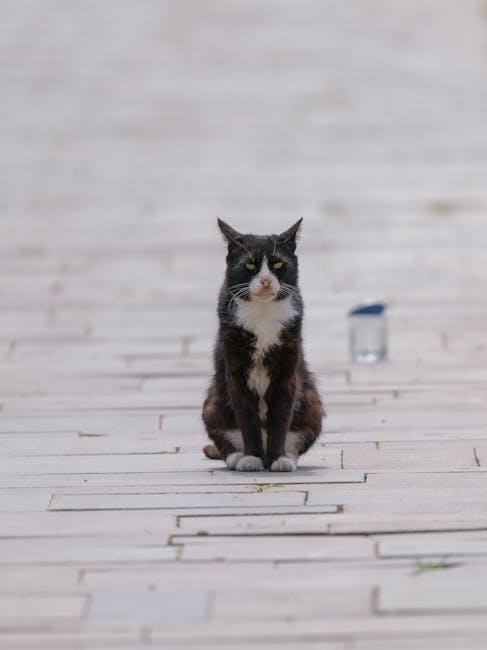
Plot Summary of “The Black Cat”
The story follows an unnamed narrator whose alcoholism and madness lead him to commit horrific acts against his black cat, Pluto, and ultimately his wife, culminating in a chilling discovery.
The narrator introduces himself as a self-proclaimed animal lover, describing his deep affection for pets, particularly his black cat, Pluto. However, his demeanor shifts as he reveals his darker tendencies, including alcoholism and a volatile temper. This introduction sets the tone for the story, showcasing his unreliable nature and foreshadowing the horrific events that unfold. His initial portrayal of innocence and love for animals contrasts sharply with the cruelty that follows, highlighting the complexity of his character and the ominous themes of the tale.
3.2. The Black Cat Pluto
Pluto is the black cat cherished by the narrator and his wife. The cat is remarkably large, sleek, and affectionate, becoming a central figure in the household. Pluto’s fondness for the narrator initially strengthens their bond, but as the narrator’s alcoholism worsens, his behavior towards Pluto deteriorates. The cat’s unwavering loyalty contrasts with the narrator’s growing cruelty, making Pluto both a symbol of innocence and a catalyst for the narrator’s downward spiral into madness and violence. Pluto’s presence is pivotal to the story’s eerie and tragic progression.
3.3. The Tragic End of the Narrator’s Wife
The narrator’s wife meets a shocking and horrific demise at the hands of her increasingly unstable husband. Her death occurs during a fit of rage, as the narrator, driven by madness and alcoholism, kills her with an axe. The wife’s tragic end symbolizes the destructive power of the narrator’s inner turmoil and marks a turning point in the story’s descent into darkness. Her death, along with the entombment of Pluto, underscores the themes of cruelty and the unraveling of the narrator’s sanity;
3.4; The Discovery of the Cat in the Wall
The story reaches its chilling climax when the narrator, believing he has hidden his crimes, is confronted by the police investigating his wife’s disappearance; During their search, the persistent meowing of the black cat leads them to the wall where the narrator had entombed both his wife and Pluto. The discovery exposes his atrocities, leaving the narrator stunned and unable to comprehend the cat’s haunting presence, which serves as a grim reminder of his guilt and the inescapable consequences of his actions;
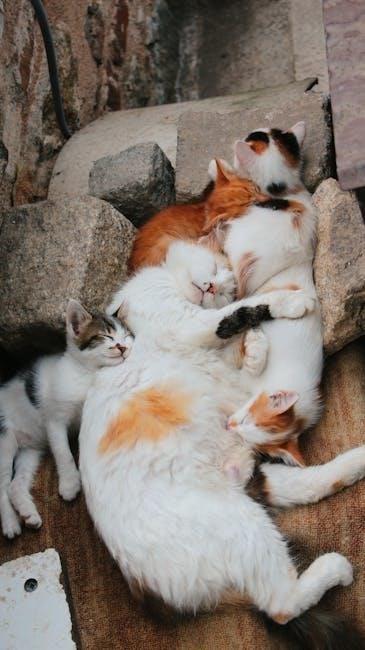
Themes in “The Black Cat”
Guilt, madness, and the supernatural are central themes, with cruelty and justice intertwining to highlight the narrator’s descent into darkness and the haunting consequences of his actions.
4.1. Guilt and Remorse
Edgar Allan Poe’s “The Black Cat” masterfully explores guilt and remorse through the narrator’s descent into madness. His cruel actions toward Pluto and his wife evoke deep psychological turmoil, as he struggles with self-justification and inner condemnation. The haunting ending, with the cat’s corpse in the wall, symbolizes the inescapability of guilt. This theme underscores the dark, moral complexity of Poe’s narrative, leaving a lasting impression on readers.
4.2. Madness and Alcoholism
In “The Black Cat,” Poe vividly portrays the narrator’s descent into madness, fueled by alcoholism. His addiction exacerbates his instability, leading to irrational violence against Pluto and his wife. The narrator’s inability to control his actions, coupled with his delusional justifications, highlights the destructive power of alcohol and mental deterioration. This theme serves as a chilling commentary on the blurred lines between sanity and insanity, central to Poe’s exploration of the human psyche.
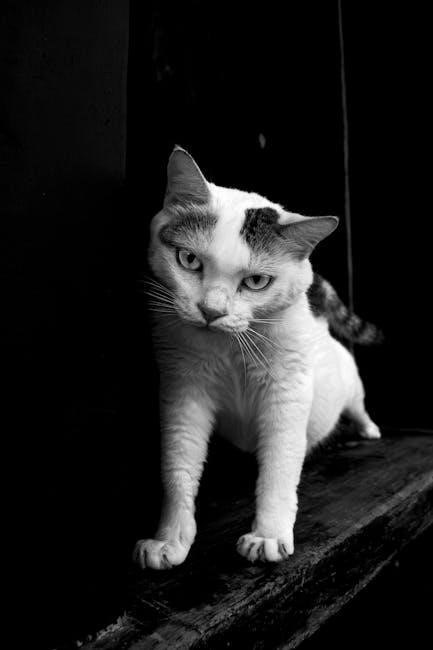
4.3. The Supernatural and the Unknown
Edgar Allan Poe masterfully weaves the supernatural into “The Black Cat,” creating an eerie atmosphere of mystery. The black cat Pluto’s enigmatic behavior and its unsettling reappearance after death suggest a connection to the unknown. These events blur the line between reality and the supernatural, leaving readers to ponder the possibility of otherworldly intervention. The story’s dark ambiguity heightens its chilling effect, making it a classic tale of psychological horror and cosmic uncertainty.
4.4. Cruelty and Justice
The story explores themes of cruelty and justice through the narrator’s brutal treatment of Pluto and his wife. The narrator’s alcoholism fuels his violent behavior, leading to tragic consequences. Pluto’s mysterious return after death symbolizes a form of cosmic justice, as the narrator is haunted by his own cruelty. The tale suggests that cruelty inevitably leads to punishment, echoing Poe’s fascination with moral retribution and the dark consequences of unchecked human depravity.
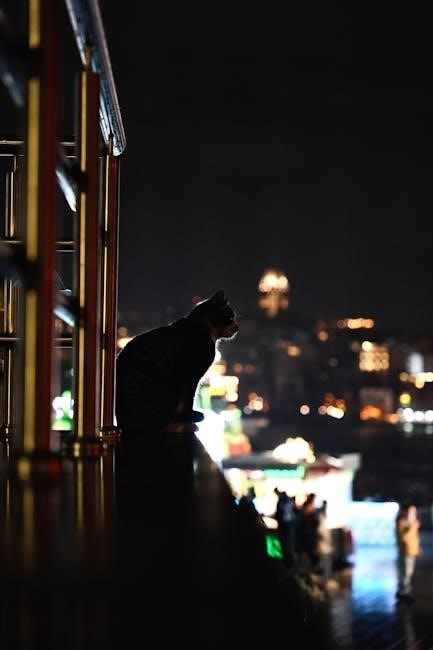
Character Analysis
The narrator, an unreliable and self-destructive alcoholic, drives the story’s dark themes. Pluto, the black cat, symbolizes both innocence and the supernatural, while the wife remains a tragic victim.
5.1. The Unreliable Narrator
The narrator of The Black Cat is a self-destructive, alcoholic man whose credibility is questionable. His descent into madness and cruelty, driven by addiction, taints his perception of events. The story’s dark tone is amplified by his unreliability, as he rationalizes horrific actions, leaving readers to question the accuracy of his account. His psychological deterioration and moral ambiguity create a sense of unease, making him one of Poe’s most complex and unsettling characters.
5.2. The Black Cat as a Symbol
The black cat, Pluto, serves as a multifaceted symbol in the story. It represents the narrator’s guilt, inner turmoil, and the supernatural elements intertwined with his psyche. Pluto’s presence signifies innocence and the narrator’s moral decay, while its mysterious survival underscores the theme of inescapable consequences. The cat’s actions mirror the narrator’s descent into madness, making it a central symbol of the story’s dark and haunting narrative. Pluto embodies both the victim of cruelty and the haunting presence of the narrator’s guilt.
5.3. The Role of the Narrator’s Wife
The narrator’s wife plays a pivotal role as a kind-hearted character who shares his affection for Pluto. Her tragic demise serves as a turning point, highlighting the narrator’s escalating madness. Her death, at the hands of the narrator, underscores his complete moral collapse. The wife’s presence emphasizes the themes of innocence and the consequences of unchecked cruelty, making her a symbolic figure in the story’s exploration of guilt and moral decay.
Psychological Aspects
The story explores the narrator’s descent into madness, fueled by alcoholism and guilt, while the black cat symbolizes his tormented psyche and the inescapable consequences of his crimes.
6.1. The Impact of Alcoholism
Alcoholism plays a central role in the narrator’s psychological deterioration. His addiction fuels irrational behavior, leading to violent outbursts and moral decay. The intoxication exacerbates his mental instability, clouding his judgment and contributing to the tragic events. The story highlights how alcoholism can destroy rational thought and moral boundaries, driving individuals to commit horrifying acts. Poe effectively portrays the destructive power of addiction, linking it to the narrator’s descent into madness and his inability to control his darker impulses.
6.2. The Narrator’s Mental Deterioration
The narrator’s mental state progressively unravels, driven by his alcoholism and guilt. His actions become increasingly erratic, showcasing a descent into madness. The brutal treatment of Pluto and his wife reflects his crumbling rationality. The narrator’s inability to acknowledge his own depravity further accelerates his psychological collapse, leading to a complete breakdown of moral and mental faculties. This deterioration is central to the story’s dark themes, illustrating the destructive interplay of alcoholism and unchecked emotions.
6.3. The Role of the Black Cat in the Narrator’s Psyche
The black cat, Pluto, serves as a symbolic reflection of the narrator’s inner turmoil and guilt. The cat’s unwavering loyalty contrasts with the narrator’s cruelty, amplifying his psychological conflict. Pluto’s mysterious presence and eventual mutilation mirror the narrator’s spiraling madness, symbolizing the destructive forces within him. The cat’s role underscores the narrator’s inability to escape his own dark impulses, making it a haunting representation of his fractured psyche and the story’s themes of guilt and self-destruction.
Historical Context
“The Black Cat,” published in 1843, reflects the Gothic literature surge of Poe’s era, exploring themes of madness and guilt, influenced by the societal and cultural climate of the time.
7.1. The Time Period of the Story
“The Black Cat” by Edgar Allan Poe was first published in 1843 in The Saturday Evening Post, reflecting the mid-19th-century fascination with Gothic literature. The story’s dark themes of guilt, madness, and the supernatural resonated with the era’s cultural and societal anxieties. Its exploration of human psychology and the unknown aligns with the Victorian era’s interest in the macabre and the mysteries of the human mind, making it a quintessential example of Gothic fiction from its time.
7.2. Social and Cultural Influences
Edgar Allan Poe’s “The Black Cat” reflects the social and cultural anxieties of the mid-19th century, particularly the rise of Gothic literature. The story’s dark themes resonated with Victorian-era fascinations with death, the supernatural, and psychological turmoil. It also touches on societal issues like alcoholism and domestic violence, which were prevalent yet often unspoken. The cultural fascination with crime and punishment further influenced its narrative, making it a product of its time while maintaining timeless appeal through its exploration of human nature and morality.
7.3. The Rise of Gothic Literature
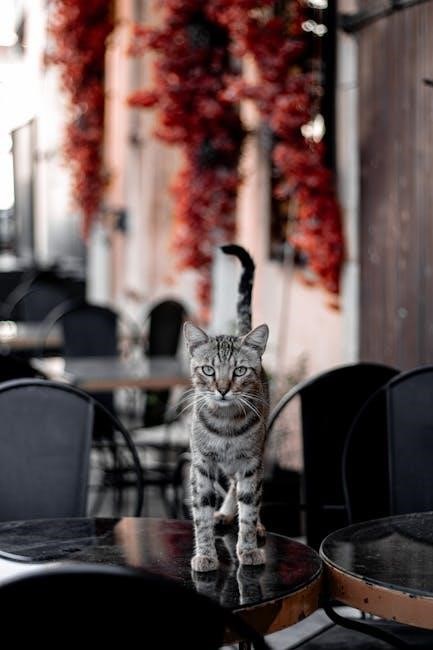
Edgar Allan Poe’s “The Black Cat” emerged during the rise of Gothic literature in the 19th century. The story’s dark themes, supernatural elements, and emotional intensity align with Gothic traditions. Its exploration of madness, guilt, and the unknown resonated with readers drawn to the genre’s mysterious and haunting narratives. Poe’s work, including “The Black Cat,” played a significant role in popularizing Gothic literature, cementing its place as a cornerstone of the genre.
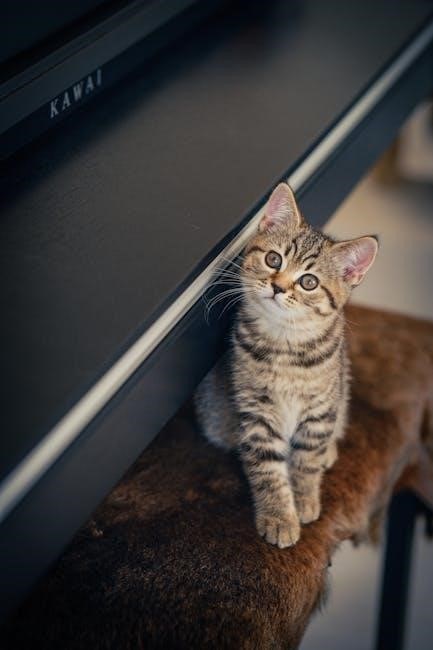
Moral and Ethical Implications
The story raises profound moral questions about cruelty, justice, and the consequences of unchecked evil. It highlights the ethical decay of the narrator, emphasizing the destructive nature of sin.
8.1. Animal Cruelty and Its Consequences
The story vividly portrays the narrator’s brutal treatment of Pluto, his black cat, leading to severe consequences. This serves as a stark warning against animal cruelty, illustrating how such actions can spiral into uncontrollable madness and destruction. The cat’s fate symbolizes the repercussions of unchecked violence, emphasizing the moral decay of the narrator. The tale underscores the ethical responsibility towards animals and the karmic retribution that follows abuse.
8.2. The Concept of Justice in the Story
The story explores justice through the narrator’s descent into madness and his ultimate downfall. The black cat, Pluto, becomes a symbol of retribution, as the narrator’s cruelty towards it leads to his own destruction. The tale suggests a form of cosmic justice, where the narrator’s actions provoke the very fate he tries to escape. This serves as a moral commentary on the consequences of evil deeds, highlighting the inescapability of guilt and the darker aspects of human nature.
8.3. The Role of Karma
Karma plays a central role in “The Black Cat,” as the narrator’s cruel actions towards Pluto and his wife lead to his own devastating fate. The black cat’s haunting presence and the tragic discovery of its corpse symbolize the inescapable consequences of his wrongdoing. Poe uses the story to illustrate the idea of moral reckoning, where the narrator’s brutality ultimately results in his destruction. The cat serves as a manifestation of the karma that pursues him relentlessly, embodying the dark justice that aligns with the narrator’s immoral deeds.
Adaptations and Interpretations
“The Black Cat” has been adapted into radio dramas and stage plays, exploring its dark themes. Interpretations often focus on the cat as a symbol of karma and guilt.
9.1. Film and TV Adaptations
“The Black Cat” has inspired numerous film and TV adaptations, including a notable episode in a series featuring Edgar Allan Poe. These adaptations often emphasize psychological horror and the eerie atmosphere of the story, staying true to Poe’s original themes while offering fresh interpretations. The 1990 TV episode, directed by Gordon, blends the story with biographical elements of Poe’s life. Such adaptations highlight the enduring appeal of the tale’s dark and haunting narrative.
9.2. Stage Plays and Radio Dramas
“The Black Cat” has been adapted into various stage plays and radio dramas, capturing its eerie atmosphere. A notable example is a live radio broadcast at Husson University’s Gracie Theatre, where the story was performed for an audience. These adaptations often use sound effects and narration to emphasize the psychological horror and suspense. They remain faithful to Poe’s original themes while offering an immersive experience for listeners and audiences, highlighting the tale’s timeless appeal and dark beauty.
9.3. Modern Interpretations and Analysis
Modern scholars and readers continue to interpret “The Black Cat” as a profound exploration of psychological decay and guilt. The story’s themes of madness, alcoholism, and the supernatural resonate deeply, with many analyzing the narrator’s unreliability and the cat’s symbolic role. Educational resources and study guides highlight these elements, offering insights into Poe’s mastery of Gothic literature. The tale’s enduring popularity is evident in its widespread availability in digital formats, making it accessible for contemporary readers to explore its dark and haunting narrative.
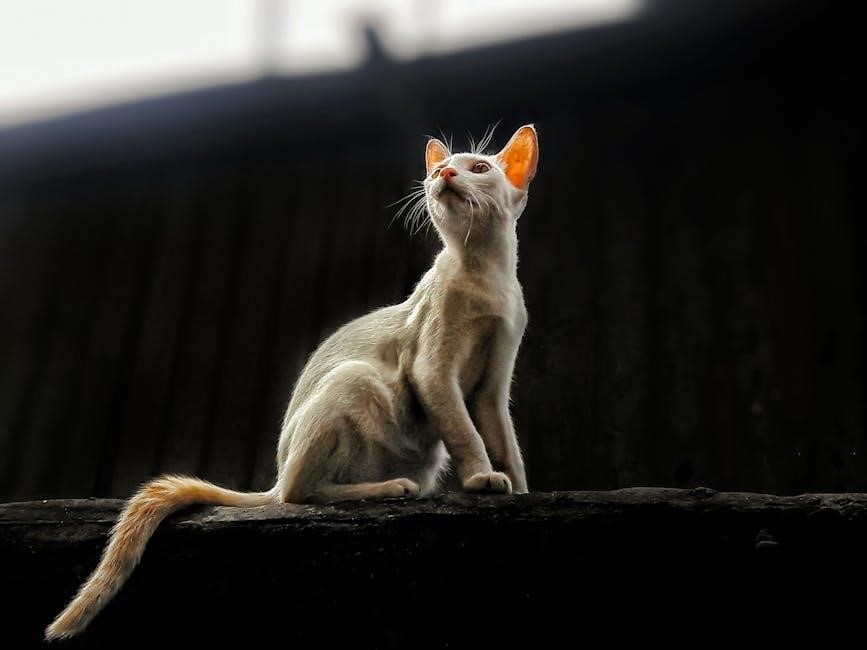
The Black Cat in Pop Culture
The story’s eerie themes and iconic black cat, Pluto, have inspired references in movies, TV shows, and art, cementing its status as a cultural symbol of mystery and horror.
10.1. References in Movies and TV Shows
Edgar Allan Poe’s The Black Cat has influenced various film and TV adaptations, blending horror and mystery. A notable example is the season two episode of a series directed by Gordon, starring Jeffrey Combs as Poe. This semi-biographical adaptation weaves the story of Poe’s financial struggles and his ailing wife, showcasing the dark themes of the original tale. Such adaptations highlight the enduring appeal of Poe’s work in modern media, keeping his legacy alive for new audiences.
10.2. Influence on Other Authors and Artists
Edgar Allan Poe’s The Black Cat has profoundly influenced literature and art. Authors like Charles Baudelaire were inspired by Poe’s dark themes, translating his works into French. The story’s psychological complexity has also inspired filmmakers and artists, with its motifs appearing in various adaptations. Additionally, the PDF versions of The Black Cat have made it accessible for educational purposes, ensuring its impact on new generations of writers and creators. Poe’s legacy continues to shape horror and mystery genres worldwide.
10.3. The Cat as a Cultural Icon
The black cat, Pluto, has become a cultural icon, symbolizing mystery and doom. Its image appears in films, literature, and art, often representing bad luck or evil. In Poe’s story, the cat embodies the narrator’s dark psyche, making it a lasting symbol of horror. The cat’s enigmatic presence has influenced popular culture, from Halloween decorations to horror themes. Its legacy endures, reflecting the timeless appeal of Poe’s eerie tale. The cat remains a haunting figure, resonating with audiences worldwide.
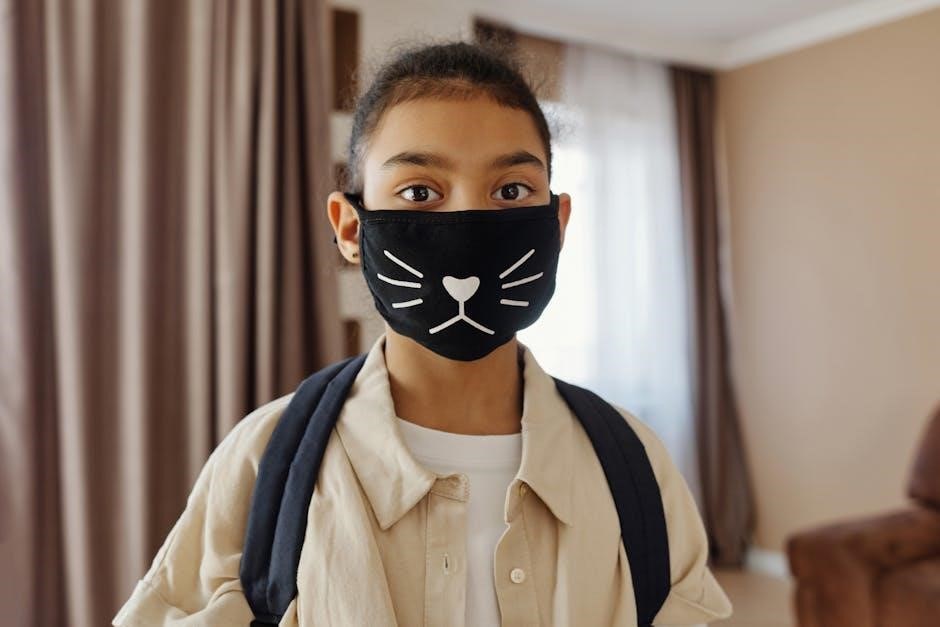
The Black Cat PDF Specifics
The Black Cat PDF is widely available, published by Black Cat Publishing in 2014. It is accessible in multiple formats, including PDF, ePub, and Mobi, ensuring easy readability across devices.
11.1. Publishing Details
Edgar Allan Poe’s “The Black Cat” was first published in 1843 in The Saturday Evening Post. The PDF version, published by Black Cat Publishing in 2014, is part of their Gothic Digital Series. Created by José Menéndez, the PDF is 81 KB in size and includes the full text of the story. It is available for free educational use, with page numbers and a clear format for easy reading. This edition ensures the story remains accessible to modern readers while preserving Poe’s original narrative.
11.2. Availability in Different Formats
Edgar Allan Poe’s “The Black Cat” is widely available in multiple formats, including PDF, ePub, Mobi, and Fb2. The PDF version, published by Black Cat Publishing, is accessible for free and ideal for educational use. Additionally, the story is part of the Gothic Digital Series by UFSC, ensuring its availability in various digital formats. These formats cater to different reader preferences, making the story easily accessible on various devices and platforms for both casual readers and academic purposes.
11.3. Educational Resources and Study Guides
Edgar Allan Poe’s “The Black Cat” is supported by various educational resources, including study guides and analysis tools. The PDF version of the story is widely used in classrooms, offering insights into themes like guilt, madness, and the supernatural. Study guides provide plot summaries, character analyses, and discussion questions, aiding students in understanding the story’s depth. These resources are particularly valuable for literary analysis and teaching the elements of Gothic literature, making them essential for academic exploration of Poe’s work.
Edgar Allan Poe’s “The Black Cat” remains a haunting tale of guilt and madness. Its PDF availability ensures educational access, preserving its timeless psychological insights.
12.1. Relevance of the Story Today
Edgar Allan Poe’s “The Black Cat” remains remarkably relevant today, offering timeless insights into human psychology and morality. Its exploration of guilt, madness, and cruelty continues to captivate modern readers. The story’s themes of justice and the supernatural resonate universally, making it a staple in literature and psychology studies. The availability of “The Black Cat” in PDF formats ensures its accessibility for educational purposes, allowing new generations to engage with Poe’s masterful storytelling and its enduring lessons about the darker aspects of human nature.
12.2. Final Thoughts on the Story’s Impact
Edgar Allan Poe’s “The Black Cat” leaves a lasting impression with its haunting narrative and profound psychological depth. The story’s exploration of guilt, madness, and the supernatural continues to influence literature and popular culture. Its themes of cruelty and justice provoke reflection, while the black cat, Pluto, remains a symbol of both innocence and retribution. The PDF availability of this tale ensures its enduring legacy, allowing readers to revisit a masterpiece that lingers in the mind long after the final page.

Be First to Comment